The Aston Martin V8 had a number of built in rust traps. I'll describe some of the methods used to treat the metalwork and to remove the rust traps.
The underneath of the Aston Martin V8 was originally finished in underseal applied directly on top of bare metal. Fortunately this example has been well looked after, but after 30 years the underseal has failed.
 |
Cracks had developed in the underseal at virtually every edge and panel joint, and water had become trapped causing the panels to rust. The underseal was softened using a heat gun, then removed with a number of cunningly shaped scrapers and a wire brush. |
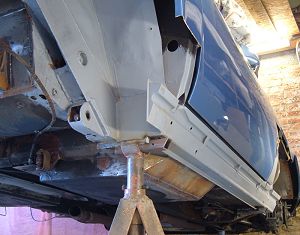 |
Following keying with some 80 grit sandpaper the steel was then coated with a high zinc content primer. |
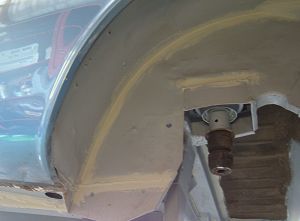 |
Brushable seam sealant was applied over any seams. Arguably it's best to do the seam sealing before priming, but for metal with surface rust I prefer to take advantage of the rust beating qualities of a good primer before seam sealing. I may be wrong. |
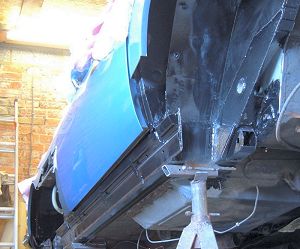 |
The top coat is Finnegans Smoothrite. This will be covered by a layer of body shultz (underseal) as the smoothrite will not be resistant to stone chips. An alternative to Smoothrite is Por-15 which has a very good reputation among classic restorers and is said to be a little less brittle than Smoothrite. |
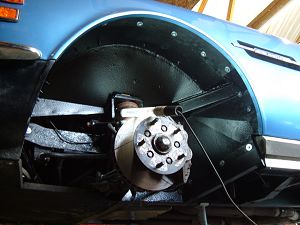 |
Body shultz (spray on underseal) was used because it's resistant to stone chips and close to the original finish. |
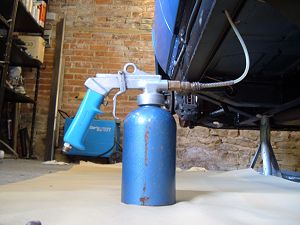 |
Next step was to waxoyl inside the box sections. The waxoyl gun was bought in the early 1990s for about £60 from an automotive paint shop. The high pressure seems to give a much more even coverage than the DIY hand pump kits, although the waxoyl still needed to be warmed in hot water before spraying. Injection holes were drilled at the lowest point of each chassis box section, and were left open after injection to act as drain holes. The waxoyl gun needed holes around 10mm diameter. |
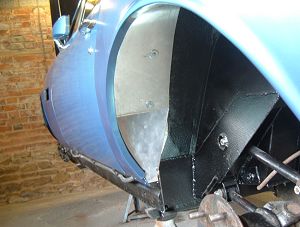 |
The sills originally rusted away because mud could rest on the chassis and fall into the gap between the stainless steel sill covers and the outer sills. The new wheelarch liners in the photo were created to remove that problem. Rather than following the wheelarch downwards exposing a flat piece of outer sill, the new cover extends outwards to cover the sill. A similar approach was taken with the front wheelarch covers. |
| The stainless steel sill covers would still trap any mud that found it's way behind them. I had ideas of spacing them away from the bottom of the sill and drilling drain holes in the bottom, though decided this would be too fiddly to execute neatly. Removing them occasionally for cleaning and waxoyling should hopefully be enough to preserve the sills from further rot. Back to: Aston Martin Restoration |
|